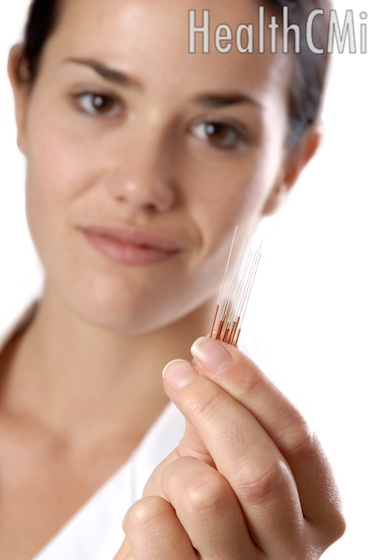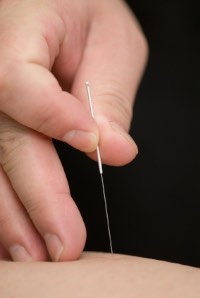Acupuncture reduces alcohol cravings in alcoholics. Researchers note that acupuncture is both safe and effective for reducing cravings in alcohol dependent patients. They add that acupuncture is an inexpensive modality of care for the treatment of alcoholism and “produces significant results.” 
This study breaks from other research on this topic. Prior research focused on National Acupuncture Detoxification Association (NADA) acupuncture point prescriptions for addiction. This typically involved use of auricular acupuncture points including Kidney, Sympathetic, Shenmen, Liver and Lung. However, this study used only one acupuncture point that is located on the lower leg. The researchers note of this acupuncture point, “Traditionally, it has been used as an acupoint for detoxification.”
What’s the Point?
The acupuncture point investigated in the research is Zhubin (KI9) that is translated as “guest house.” It is located on the medial aspect of the lower leg and is 5 cun superior to KI3. It is approximately 1 cun posterior to the medial border of the tibia at the lower end of the gastrocnemius muscle. It is placed on a line drawn between KI3 and KI10.
KI9 is the Xi Cleft point of the Yinwei (Yin linking) vessel. This is the channel that connects the yin meridians of the hand and foot to the Conception channel. The Yinwei vessel may also be accessed by acupoint PC6, the confluent point of the Yinwei vessel. To achieve this, PC6 is often paired with SP4, its paired confluent point for the treatment of heart, chest and stomach disorders.
This study used only KI9, whose Yinwei vessel connection makes it especially suitable for the treatment of heart issues. In particular, this point benefits patients with heart shen (spirit) issues due to phlegm and phlegm-fire. This includes the treatment of mania, raving, bipolar disorder (manic depression) and other forms of severe mental illness. Here, there is a logical consistency with the application of KI9 for the treatment of alcohol cravings given alcoholism’s propensity for causing phlegm-fire in the heart.
The Protocol
An acupuncture treatment group was compared with a placebo controlled group in this single-blinded, randomized investigation. The acupuncturist was aware of the group allocations but the staff and patients were blinded to allocation of placebo vs. real acupuncture groups. This was made possible through the use of the Park Sham Device (PSD). Made by Acupuncture Needle Inc., Korea, this unusual sham acupuncture needle device simulates acupuncture needle insertion but never actually penetrates the skin. The researchers note, “It has a 15 mm diameter round plastic base and a shaft telescopes into the handle when downward pressure is applied. Placebo needles have blunt tips and are put into the tube to mimic the insertion of a needle.”
Exclusion criteria included drug abuse, use of psychotropic medications, cognitive impairment and other factors. The treatment procedure commenced after three weeks of patient admittance to the study to avoid intoxication and withdrawal symptom complications. All real acupuncture and placebo group patients received group therapy, education and standard hospital care. The real acupuncture group received acupuncture at KI9 using a needle guide tube with a 0.25 X 40 mm needle (Dongbang Acupuncture Inc., Korea). The Park Sham Device was used for all placebo group patients. All subjects had treatment periods of 15 minutes, twice per week for a total of 4 weeks.
Testing of cravings was performed using a Visual Analogue Scale (VAS) for assessment. The researchers note, “We used a horizontal line, with 120 mm in length. At the left end, the subject feels no craving for alcohol, while he feels a maximum craving for alcohol at the right end. The subject marks on the line the point that they feel represents their craving for alcohol in their current state.” Testing of cravings was performed after provoking cravings at week 1, 2 and 4 of the study. In all cases, the acupuncture group had significantly less cravings than the placebo group.

The cravings for alcohol were provoked by giving the subjects sips of liquor once every 30 seconds for 3 minutes. This was followed by a 3 minute interval and another period of sipping liquor every 30 seconds for another 3 minutes. The researchers note that the acupuncture group showed significant reductions in cravings and the placebo control group showed no improvement. The research team notes of the 4 week study, “The results showed that the acupuncture treated group had a significant craving reduction compared with the control group. Acupuncture treatment on Zhubin (KI9) was effective from the 1st week of treatment and its effect lasted through the 4 weeks.”
Reference:
Lee, Jin-Seong, Sung-Gon Kim, Taek-Geun Jung, Woo Young Jung, and Seong-Yeon Kim. "Effect of Zhubin (KI9) acupuncture in reducing alcohol craving in patients with alcohol dependence: A randomized placebo-controlled trial." Chinese journal of integrative medicine (2014): 1-5.


